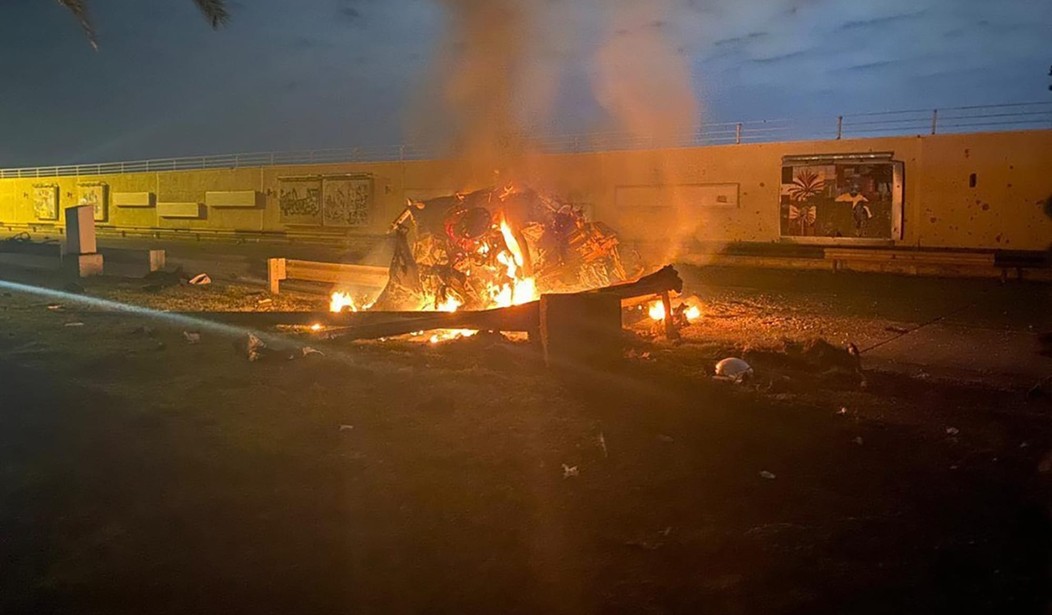World wars are difficult to start, costly to end, and even when no one wants one, generally everyone can see one coming a mile away. We are not, despite what you may have heard on the news, about to stumble into World War III over Iran.
While we have but two wars bearing the title “World War,” by my count there have been no fewer than four — five, if you stretch the tiniest bit to include the Cold War.
The first was the Seven Years War (1756-1763). Seemingly mild by the 20th-century’s gruesome standards, the 7YW pitted global coalitions — one led by Britain, the other by France — in an almost decade-long fight spanning five continents. Even without the benefit of 250-plus years worth of hindsight, it was apparent even then that the Seven Years War was a century in the making. Britain and France rubbed elbows more and more frequently and violently as their colonial possessions grew closer and closer together. Yet if the conflict failed to make any changes to the map of Europe, that doesn’t mean it was inconsequential. For one, the taxes imposed by Britain on her American colonists to help pay for the war was one of the root causes of the American Revolution.
Flash-forward almost exactly 40 years, and again Europe’s troubles dragged the world into another global conflict far deadlier than the first: The Napoleonic Wars. While they were technically several wars featuring an ever-shifting roster of alliances and coalitions, in the end the Napoleonic Wars were all one conflict over one overarching issue: Would the European peace be kept by a single dictator, or by a balance among the Great Powers? The Battle of Waterloo and the resulting Congress of Vienna soundly settled that issue for the next 99 years, and only the decline of Turkey and the emergence of unified Italy and (especially) Germany in the late mid-century risked upsetting Metternich’s peaceful “concert of nations.”
Then there are the official World Wars. The only real surprise about either one of them was that the carnage was more terrible than even the most pessimistic forecasts.
ASIDE: For a narrative-busting explanation of the causes of WWI and WWII, I can’t recommend Donald Kagan’s On the Origins of War: And the Preservation of Peace too highly.
The Cold War is unique in that while it spanned the globe, featured a series of bloody conflicts — Korea, Vietnam, Afghanistan, etc. — for local dominance or protection of existing interests, but the main antagonists never (officially) faced one another on the field of battle. The Cold War is also unique in that it was the first global conflict in which none of the strictly European powers were the main players. (Russia is Eurasian, not European.) Europeans for once were the subject of outsiders determining their fate, and you don’t have to read too many headlines to discern that many of them are still bitter about that.
All our world wars have these four things in common:
• Large (if sometimes shifting) coalitions
• At least two of the major antagonists enjoying global or near-global reach
• Stakes high enough for all sides to marshal huge forces and project them outside their own borders
• Rivals powerful enough to wage war for an extended period of time
Let’s keep these conditions in mind when evaluating recent hysterical claims that the targeted killing of Iranian terror mastermind Qassim Suleimani will start a global war.
I’ll leave it to others to debate the wisdom of Trump’s decision, although I for one did not find it wise: I found it instead to be both wise and daring. And also 15 years overdue. What it was not was a harbinger of World War III. Er… V? VI? The Suleimani Death Strike (great name for a Persian punk band) probably isn’t even the start of major hostilities — again, hysterical claims aside — between the United States and the Islamic Republic.
Let’s take those four conditions one a time.
Coalitions
Where is Iran’s coalition? Iran is a useful thorn in our side to Vladimir Putin, but not one worth going to war over. In fact, a costly US land invasion might suit his interests just fine, happy to see us stuck in another Middle Eastern tarpit. China doesn’t care much who runs Iran, so long as the oil keeps flowing. Tehran threatens to close the Straits of Hormuz? Fine: Those cash-strapped murderous bastards might as well slice off their own noses. Hell, if the Mullahs tried anything that stupid, we might find Chinese troops forcing Hormuz back open.
Meanwhile — and you won’t see mention of this in the mainstream media — the United States already enjoys an anti-Iran coalition. It includes the United States, Israel, and the Saudi-led Gulf states. Egypt could probably be counted on in a pinch, as well. The Mullahs Regime is at best tolerated by some, despised by many, and loved by none.
Global Reach
Iran has global reach of a sort, but it’s limited to terrorism. Tehran has extended its semi-by-proxy military reach to Iraq and Syria, with results that have been mixed, at best. Tehran has also provided means for the Yemen Civil War to fester for seemingly ever, but lacks the ability to force a pro-Iran solution no further away than the opposite side of the Arabian peninsula. While the terrorist al Quds force remains a deadly nuisance, the ability of the Iranian army to project power even within Iran’s own borders is something of a question.
Meanwhile, a US Air Force officer outside of Las Vegas receives an order and pushes a button, and minutes later outside the Baghdad airport, Iran’s chief terror architect becomes actual carry-on baggage. Now that, my friends, is global reach.
High Stakes
Iran to us is a nuisance, although a sometimes deadly one. If Iran pushes too hard, they now understand that the lives of their leadership is at risk. The stakes — for them — are too high to risk pushing too hard.
Extended Timeline
Iran has been at war with us since 1979, or us with them since 1953, depending on how your ideological math works it out. But it has been, as PJ’s own Richard Fernandez pointed out yesterday, a low-level “secret war” in which neither side committed too much or risked too much. Trump’s order to eliminate Suleimani in such a flagrantly public way, Fernandez argued, “eliminated secret war with Iran as an alternative.” This, he wrote, “puts enormous pressure on Tehran to either open another front against America or negotiate a ceasefire… nobody really wants open war, but Iran can stand it least of all.” Iran has been able to fight us for four decades only because they’ve kept the fighting mostly in the shadows (a point we’ll get back to shortly).
From Iraq through Syria and into Lebanon, and from there down to Yemen, Iran is already overextended militarily. They’re also short on cash, having blown through Obama’s largess trying fruitlessly to conquer the Levant, and now back — thanks to President Trump — under a painful sanctions regime. As Angelo Codevilla noted on Friday:
President Trump, for his part, is even more determined than Obama to leave the Middle East to its own devices. But he intended to try forcing Iran into peace by restoring and tightening U.S. sanctions, and by backing Iran’s Sunni Arab opponents even more strongly. In short, Trump would up the ante in response to Iranian provocations.
How at this point does Iran retaliate? Ali Mamouri wrote late last week that “the economic hardship in Iran — in addition to the challenges the government is facing internally — would not allow Tehran to increase the tension.” How at this point does Iran escalate? As Rasha Al Aqeedi asked — rhetorically, you can be sure — following Suleimani’s exquisite demise, “What will the IRGC do now that it has not already done? Kidnap foreigners? Strike military bases? Sack embassies? Assassination attempts? Target GCC oil interests? Send out militias to crackdown on adversaries?”
Meanwhile, Trump still owns the Big Stick — and it isn’t more drone strikes. Let’s go back to that Codevilla column for a moment:
Because America is the world’s sine qua non economic power, U.S. “secondary sanctions” —meaning we will not trade with anyone who trades with the target country — are potentially deadlier than atom bombs. Trump added secondary financial sanctions as part of his revocation of Obama’s “Iran deal,” reducing Iran’s oil sales to a trickle. Compared to that measure of war, bombing a few ports would have been nothing.
Were the United States to place secondary sanctions on all manner of goods, especially food, the effect would be far greater than an invasion by the entire U.S. army. How the Iranian people would deal with the choice between starving and ending their government’s war on America would be their business.
Or as an Iranian woman told Bloomberg’s Rodney Jefferson on Saturday, “How do they expect people to rally behind them and support their cause for vengeance when they beat the same people on the streets and cut their internet just a few weeks ago?”
Indeed.
By any measure, Trump’s daring call to eliminate Suleimani hasn’t brought us any closer to war with Iran, because we’ve been at war for a very long time. It hasn’t brought us any closer to World War III, because there’s no Iranian coalition, and far from being a global power, Iran is an overextended regional player. If anything, as both Fernandez and Codevilla made plain, the Suleimani assassination sets the stage, however unlikely, for a potential peace.
“Unlikely” though is still better than “impossible,” and peace was impossible so long as the Iranian leadership felt they could wage shadow war against us with impunity.
The shadow was burnt away last week by the blinding light of an orange fireball, and impunity died among the shattered bits of what a moment before had been Qassim Suleimani.










